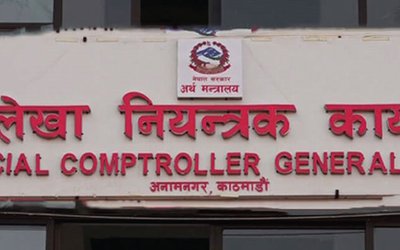Why a separate campaign?
This national program should be designed to transform the country into a world trade hub. Because it includes attractive offers for local and foreign companies. This campaign can focus on creating valuable and respectable employment. It provides skill enhancement in almost every field to improve the condition of the youth of the country.
Benefits of “Make it in Nepal”
The successful implementation of this plan will surely fulfill the following major objectives: To ensure solid development and valuable job creation in the country, the country will be fully self-sufficient in the construction sector with the help of top investors, benefiting both parties,"Make in Nepal" helps companies to create their brand in the global market.
This will help to increase Nepali GDP and increase the value of Nepali currency. We will keep our investors in the country who were planning to move their business out of Nepal due to lack of resources and clarity of policy issues.Due to this fact, the possibility of companies from all over the world investing heavily in the “Make in Nepal” project cannot be ruled out.
Make in Nepal Policy Structure
The Government of Nepal needs to make great efforts to reduce any kind of burden on investors. For this reason, there should be a dedicated web portal for resolving all queries from business organizations.
Disadvantages of Make in Nepal
Let us now look at some of the potential pitfalls of “Make in Nepal”. In these areas the government should implement some corrective measures; Possible negligence in the agricultural sector, depletion of natural resources, losses for small entrepreneurs, land acquisition and management barriers, production or construction-based economy, interest in international brands, pollution, bad relations with neighbors, etc.
This policy is urgently needed to free Nepal from unemployment through development and growth. We can change Nepal's poverty to a great extent by solving the problem of youth unemployment. Thus, after the success of this campaign, the country's economy will reach new heights. It can solve various social issues in the country.
The amount of foreign investment commitment in the country's industrial sector has decreased.According to the Department of Industry, foreign investment commitment of Rs. 25.31 billion has been made in the first seven months of the current fiscal year, which is Rs. 3.15 billion less than the corresponding period of the previous fiscal year. In the first seven months of the last Fiscal Year, foreign investment commitment of Rs. 28.46 billion was made.
The Nepali private sector has announced the 'Make in Nepal –Swadeshi (Indigenous)' initiative to encourage production in Nepal and to boost the economy with dedicated investment in construction and services. This is very ambitious
Should Nepal be able to emerge as a top destination for direct investment, overtaking India, the US, and China, is that possible? This campaign should take concrete form as a national program. The state, and local bodies should also start their initiatives.
Learning lesson from 'Make in India' :
The policy change of India was planned to increase investment, production, and employment in three key variables in the construction sector. These tests help us measure policy success.
In terms of production growth, we find that the monthly index of India’s industrial production increased by only double digits on two occasions between April 2012 and November 2019. The statistics show that for many months, it was below projection and even negative for a few months. Negative growth indicates a contraction of the region.
In terms of employment growth, Indians questioned the government's delay in making the data public as well as its efforts to revise existing data collection mechanisms. The main point of contention is that employment, especially industrial employment, does not appear to have kept pace with the pace of new entrants into the labor market. Therefore, in all these calculations, there is a suspicion that 'Make in India' has failed, but in the long run, its effect remains to be seen.
Contingency of policy
It has turned into an era of never-ending plan announcements. ‘Make in India’ is a good example of a continuous stream of ‘plan’ announcements. There were two major obstacles to the announcement. First, most of these schemes relied heavily on foreign capital for world markets for investment and production. This created inherent uncertainty, as domestic production had to be planned elsewhere according to demand and supply conditions.
Second, policymakers ignored the third deficit of the economy, which is implementation. While economists are concerned about budgets and fiscal deficits, policymakers should also consider the effects of implementation deficits in their decisions.
The result of such policy inspections is evident in a large number of stalled projects in India. The policy crash of policy announcements without them being prepared to implement '.
The question to be answered is, why did 'Make in India' fail? There are three reasons. First, it set a very ambitious growth rate for the manufacturing sector. The annual growth rate of 12-14% is beyond the capacity of the industrial sector.
Historically, India has not achieved this, and the prospect of building capacity for such a sudden change is a testament to the government's ability to implement it. Second, the initiative brought many areas to its level. This led to policy-centric losses. Besides, this policy is removed from any understanding of the comparative advantages of the domestic economy.
Third, given the uncertainty of the global economy and the growing trade protectionism, the initiative was seen as abusive.
When we examine the incompatibility of 'indigenous' products with foreign capital, a lot of contradictions emerge. This has led to a scenario where there is an 'easy to do business, but the investment is yet to arrive. Policies are more important than ordinary activities to boost the economy.
The government must understand that industrialization cannot be started by a series of bills in Parliament and by a meeting of investors.
Recently, some private-sector manufacturers in Nepal, who import most of their raw materials and produce them in Nepal, and entrepreneurs based on Nepali raw materials, are advancing the "Make in Nepal-Swadeshi" campaign intending to make the nation self-reliant. Such a proposal from the government is welcome from the private sector
It has been made public that the 'Make in Nepal-' campaign has been launched to increase domestic production, increasing the competitiveness of the business, and increasing the demand for Nepali goods and services.
The campaign, which has been made public, aims to create 150,000 industrial jobs annually by operating 1,000 industries every year.The target is to increase annual exports to ३ 4.3 billion in five years and contribute 22 percent to GDP by 2025 and 26 percent by 2030.
Accordingly, the Government of Nepal is going to make the use of indigenous goods and services compulsory in government offices.The present government is going to strictly follow such a provision. But it remains to be seen how this will be implemented. The policy of using indigenous goods and services can yield significant results in the long run, except when indigenous goods and services are not available as an alternative to foreigners. Encouragement of indigenous goods and services will help reduce the trade deficit by increasing internal employment, market expansion, and overall economic activity.
In pursuance of these objectives, the government is going to implement a compulsory arrangement through the Public Procurement Act to encourage the use of indigenous goods and services in government offices. At present, the government has formulated such an action plan to consume domestically produced goods in the country.
The Prime Minister repeatedly disagreed with the import and sale of energy drinks and other items that can be produced in Nepal by purchasing raw materials. Nepal imports energy drinks worth tens of millions of rupees annually.Stating that the import was due to the increase in Nepal's trade deficit, Prime Minister Oli had repeatedly suggested the industrialists and traders produce goods in the country and sell them by importing raw materials. Stating that there is no shortage of market for producing and selling goods in Nepal, he suggested making good use of hard work by developing the habit of spending the money earned from misery in the right place.
The construction of industrial zones across the country has further supported the Make in Nepal campaign. For economic development, the country's economy has fluctuated over the past ten years and the Make in Nepal campaign seems to be helping to keep the balance.
Looking at all these problems, service sectors are established in our country. Individuals are finding employment opportunities in various sectors such as the private sector, restaurants, schools and colleges, and banks, hotels, etc., which also enhance the economic status of the people and their country. But the population is growing rapidly day by day due to which the state of employment problem exists.
People spend their lives earning money abroad and they send money in the form of remittances which also helps to increase the per capita income of the country.
The importance of the service sector
In the context of Nepal, agriculture and industry are the backbones of the country, but services are another important part of economic activity. The importance of the agriculture sector is decreasing day by day as the country has a major role in the service sector.
People spend their lives earning money abroad and they send money in the form of remittances which also helps to increase the per capita income of the country.
The importance of the service sector
In the context of Nepal, agriculture and industry are the backbones of the country, but services are another important part of economic activity. The importance of the agriculture sector is decreasing day by day as the country has a major role in the service sector.
- A Review Of The Handwritten “Gita Saar” Written By Krishna Prasad Lacoul In 1967-68 B.S.
- Apr 19, 2024
- “Thamel And Durbar Marg” Open 24 Hours: Strengths And Weaknesses
- Mar 31, 2024
- Nepal's Print Media Is Facing Challenges
- Mar 15, 2024
- 7th Nepal International Film Festival: Learning From The Experience Of Other Countries
- Feb 26, 2024
- Parking Prohibition: Expect To Have Options
- Jan 24, 2024

















